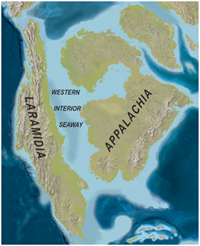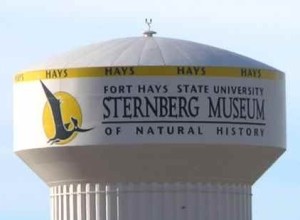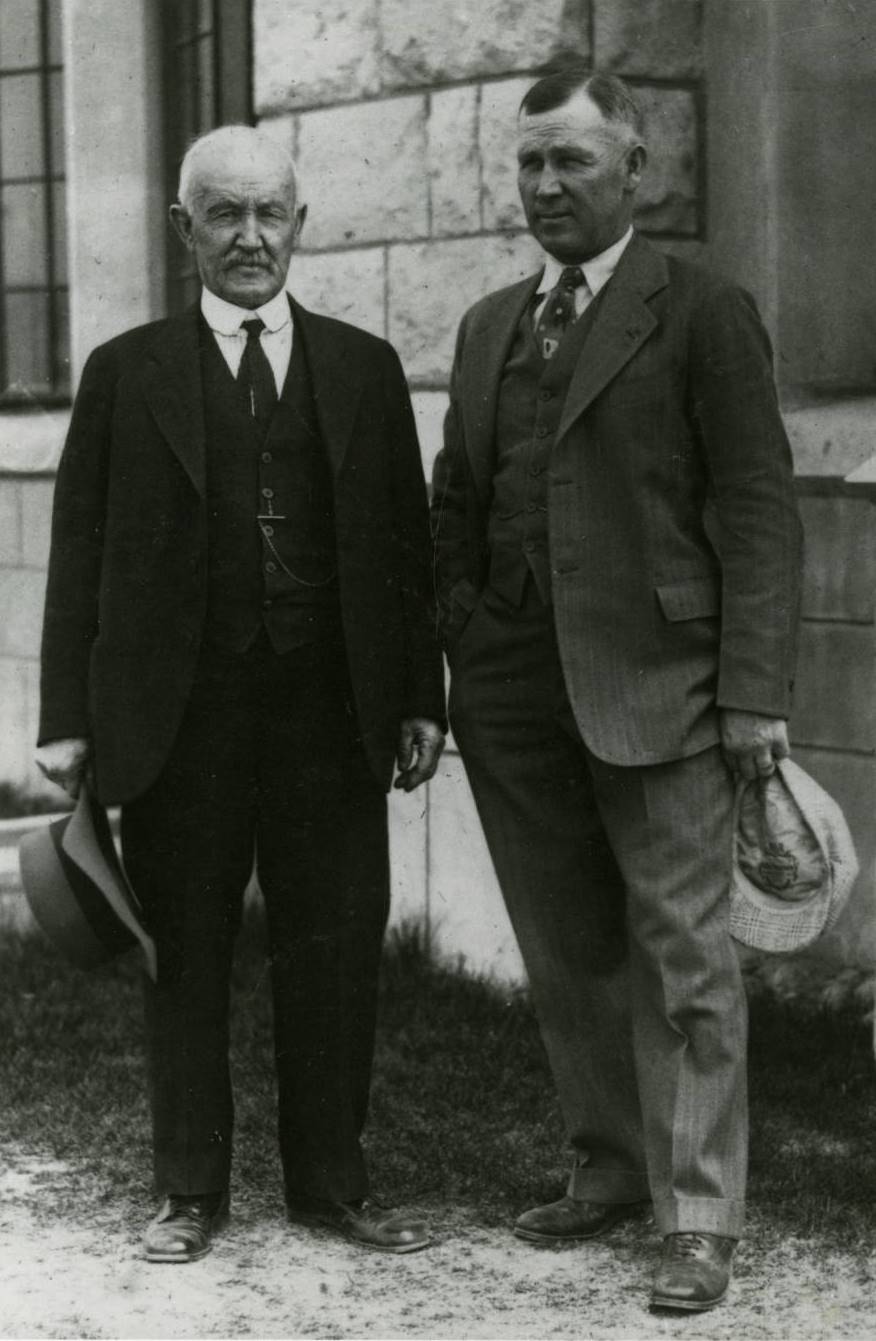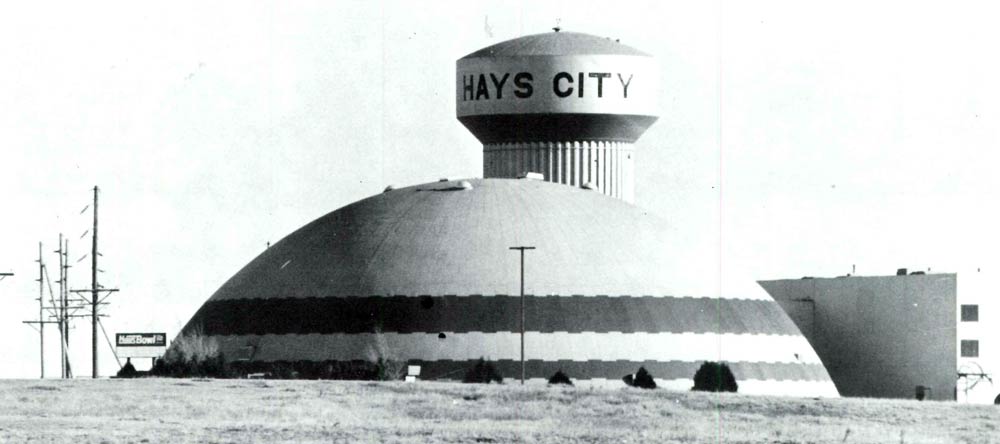About

 The Sternberg Museum of Natural History has a unique history that began with the combination of two separate university museums and the herbarium in the 1990s. However, creating an appreciation for natural history has always been our mission.
The Sternberg Museum of Natural History has a unique history that began with the combination of two separate university museums and the herbarium in the 1990s. However, creating an appreciation for natural history has always been our mission.
In terms of scientific holdings, the Sternberg Museum of Natural History ranks among the best natural history museums. No other state university the size of Fort Hays State has a natural history museum comparable in size and scientific importance as the Sternberg Museum. Our collections include one of the finest assemblies of Pteranodon material, the largest collection of fossil plants, and a truly outstanding collection of Cretaceous marine and Neogene terrestrial vertebrate fossils. We also hold an impressive collection of modern biological materials, remarkable mammals, reptiles, and plants.
 The history of the Sternberg Museum begins with Dr. George M. Sternberg, renowned Civil War surgeon and later Surgeon General of the United States Army, was assigned to Fort Harker (Fort Ellsworth), Kansas in 1866. His fascination for fossils he collected in the sandstone is what inspired him to stay in Kansas after the war. When Dr. Sternberg purchased a ranch near Fort Harker, his brother Charles H. Sternberg was invited to help manage it. Charles H. also shares the same fascination for the fossils that were discovered around the ranch, thus starting the family affair of fossil hunters.
The history of the Sternberg Museum begins with Dr. George M. Sternberg, renowned Civil War surgeon and later Surgeon General of the United States Army, was assigned to Fort Harker (Fort Ellsworth), Kansas in 1866. His fascination for fossils he collected in the sandstone is what inspired him to stay in Kansas after the war. When Dr. Sternberg purchased a ranch near Fort Harker, his brother Charles H. Sternberg was invited to help manage it. Charles H. also shares the same fascination for the fossils that were discovered around the ranch, thus starting the family affair of fossil hunters.
Charles’ three sons, George F., Levi, and Charles M. followed in their father’s footsteps and became fossil hunters. At the age of nine years, the eldest son, George F., discovered an unusual fossil reptile, a plesiosaur. This prompted George F. to devote his life to hunting, collecting, and preparing fossils which are now displayed in museums around the world.
Not long after the establishment of the Kansas State Normal College in 1902, later be known as Fort Hays State University, were some private collections donated to the young institution for education purposes. Small fossils and taxidermy mounts dotted different offices on campus until a permanent room was built in the Picken Hall. In 1914, C.W. Miller was appointed as the first curator for the Museum.
By 1915, both the library and the Museum in Picken Hall were in need of more space. This led to the development of McCartney Hall, which was designed to be both a library and a museum. The college appointed George F. Sternberg to continue maintaining and developing the museum. He, along with other professors at the college (including the famous mycologist Elam Bartholomew), assembled materials for exhibits, research, and education, resulting in the rapid growth of the Museum.
 Intended primarily as an academic support facility, the museum soon became a significant attraction. Local and regional citizens brought guests, and school teachers throughout western Kansas scheduled field trips to visit the growing Museum. One of the most noted specimens of the Museum was an exceptionally well-preserved Gillicus within a Xiphactinus, collected by Sternberg in 1952, known worldwide as the Fish-within-a-fish.
Intended primarily as an academic support facility, the museum soon became a significant attraction. Local and regional citizens brought guests, and school teachers throughout western Kansas scheduled field trips to visit the growing Museum. One of the most noted specimens of the Museum was an exceptionally well-preserved Gillicus within a Xiphactinus, collected by Sternberg in 1952, known worldwide as the Fish-within-a-fish.
After Sternberg’s death in 1969, the Sternberg Geology Club petitioned the university for the public portion of the Museum to be named in honor of the Sternberg family. In the 1970s, the administration of Sternberg Memorial Museum began to emphasize tourism and education as a part of the operation of the Museum. A mission that stressed the use of collections, as educational resources for persons of all ages, including school children, university students and faculty, local citizens, and tourists.
The continued growth of the museum once again led to a lack of collection space, overcrowded displays, reduced research space, and limited public access. The collections were stored in multiple buildings, making proper conservation and environmental control difficult to maintain. Furthermore, as a result of the FHSU's campus being situated on the flood plain, specimens were damaged on several occasions due to flooding. By the Mid-1980s university administration recognized the potential benefits of the Sternberg Museum moving to a location offering more public exhibits, safe research and collection space, and easier access.
 In 1994, the university acquire the building the Museum needed to continue its ambitious plans of becoming a world-class museum; demonstrating its commitment to science, education, and tourism. The new building also allowed the merging of the academic collections known as the Museum of the High Plains and Sternberg Memorial Museum, to became the Museum we all know today, the Sternberg Museum of Natural History.
In 1994, the university acquire the building the Museum needed to continue its ambitious plans of becoming a world-class museum; demonstrating its commitment to science, education, and tourism. The new building also allowed the merging of the academic collections known as the Museum of the High Plains and Sternberg Memorial Museum, to became the Museum we all know today, the Sternberg Museum of Natural History.
Now housed in the former Metroplex dome, The Sternberg Museum of Natural History features a realistic Cretaceous diorama, redesigned exhibits from the original museum, along with displays of specimens not previously on exhibit. Also new at “the dome” is the Discovery Room, an interactive area of the Museum where visitors can explore the wonders of nature.